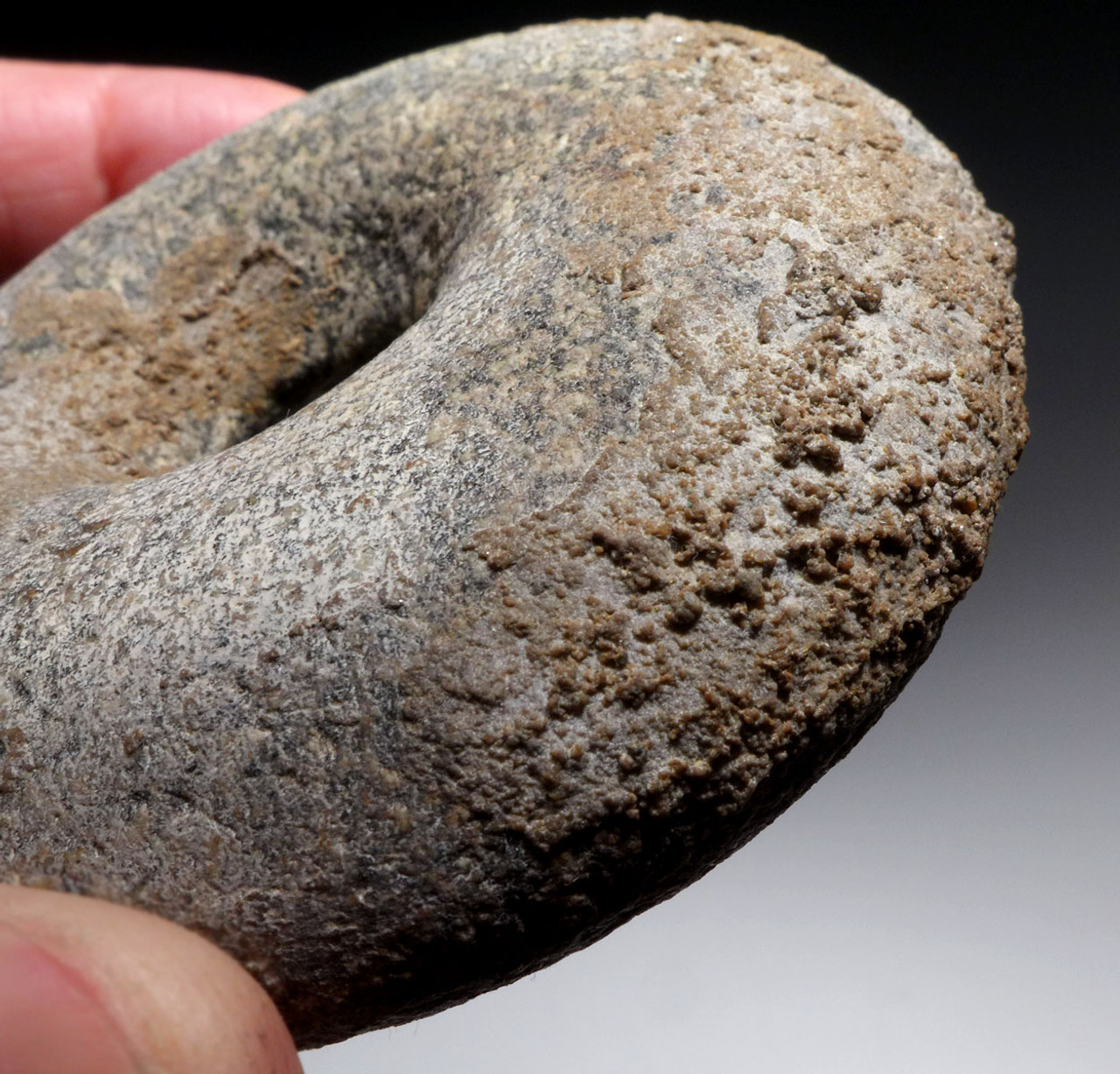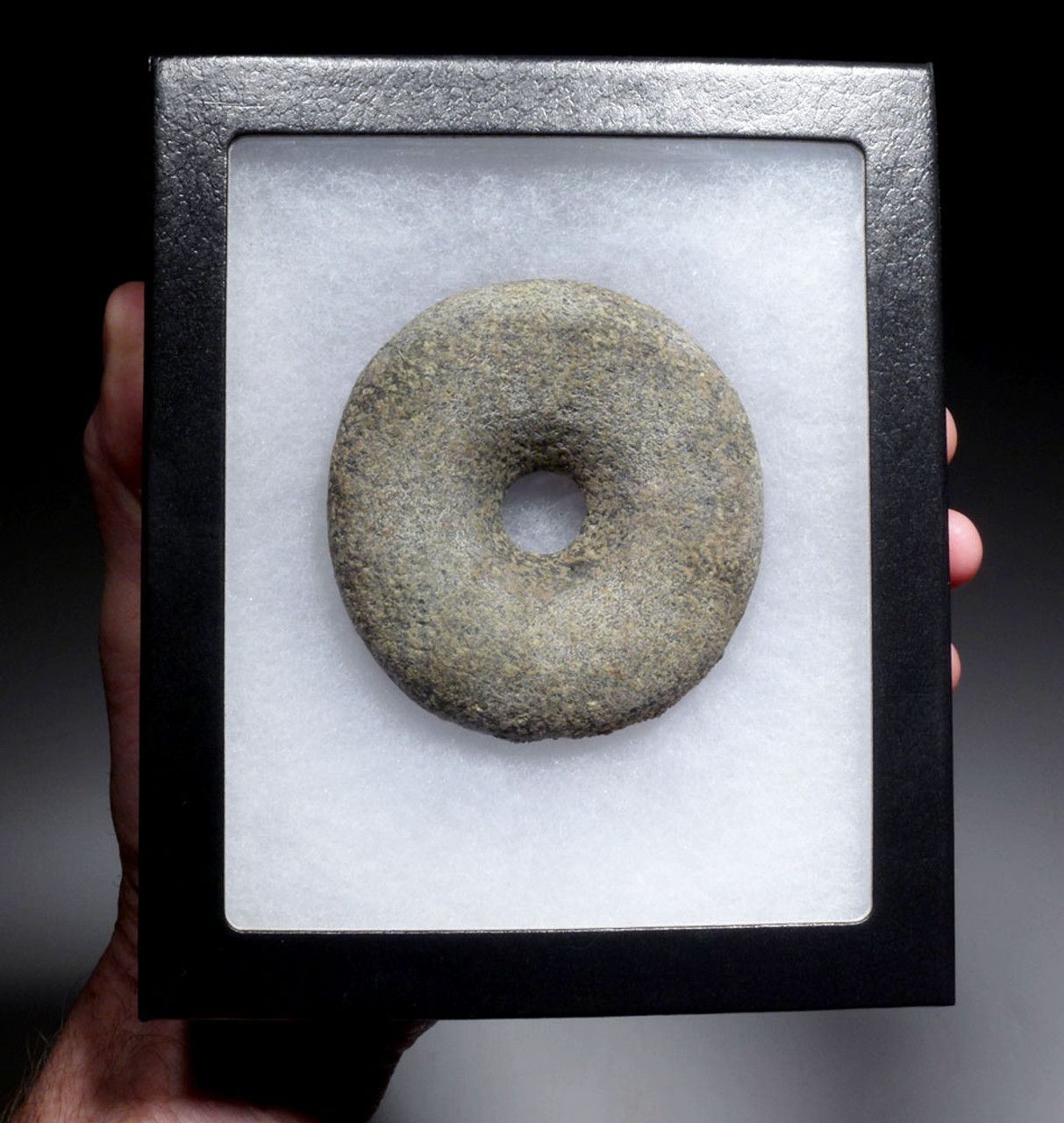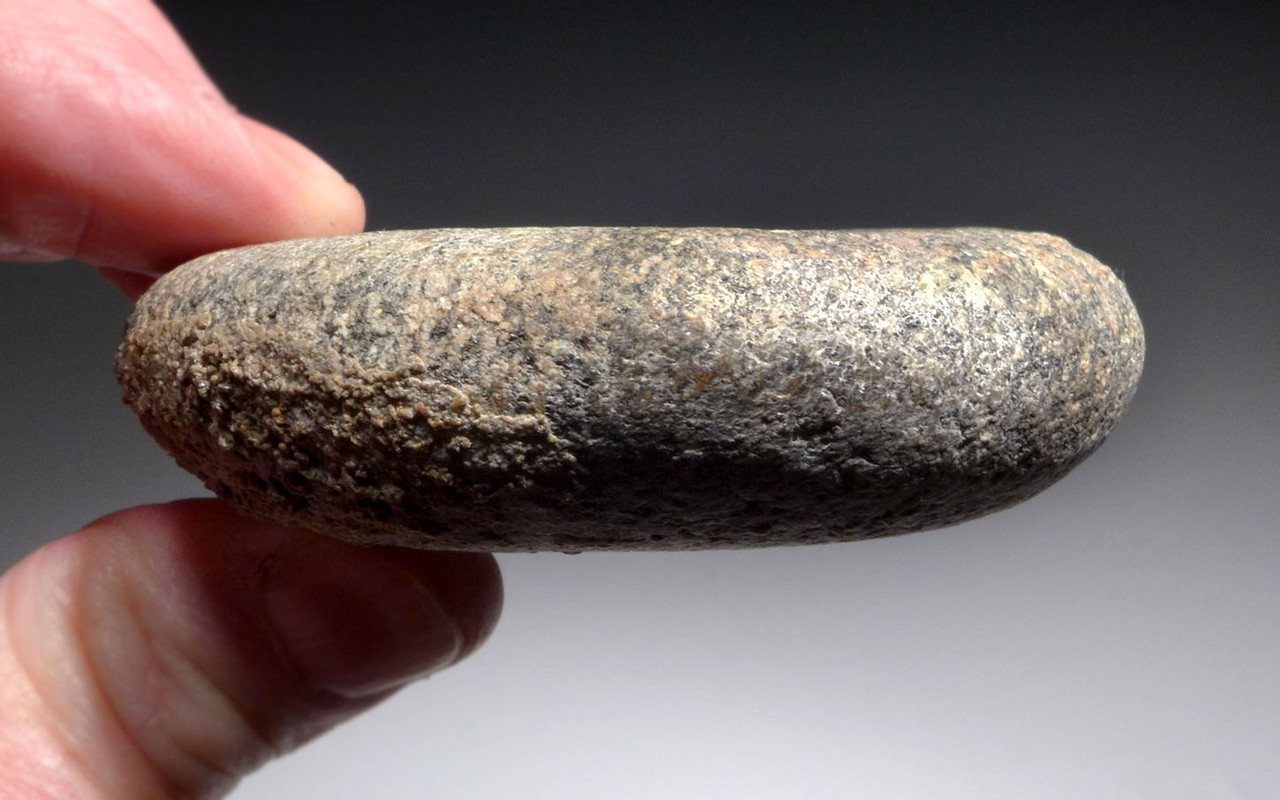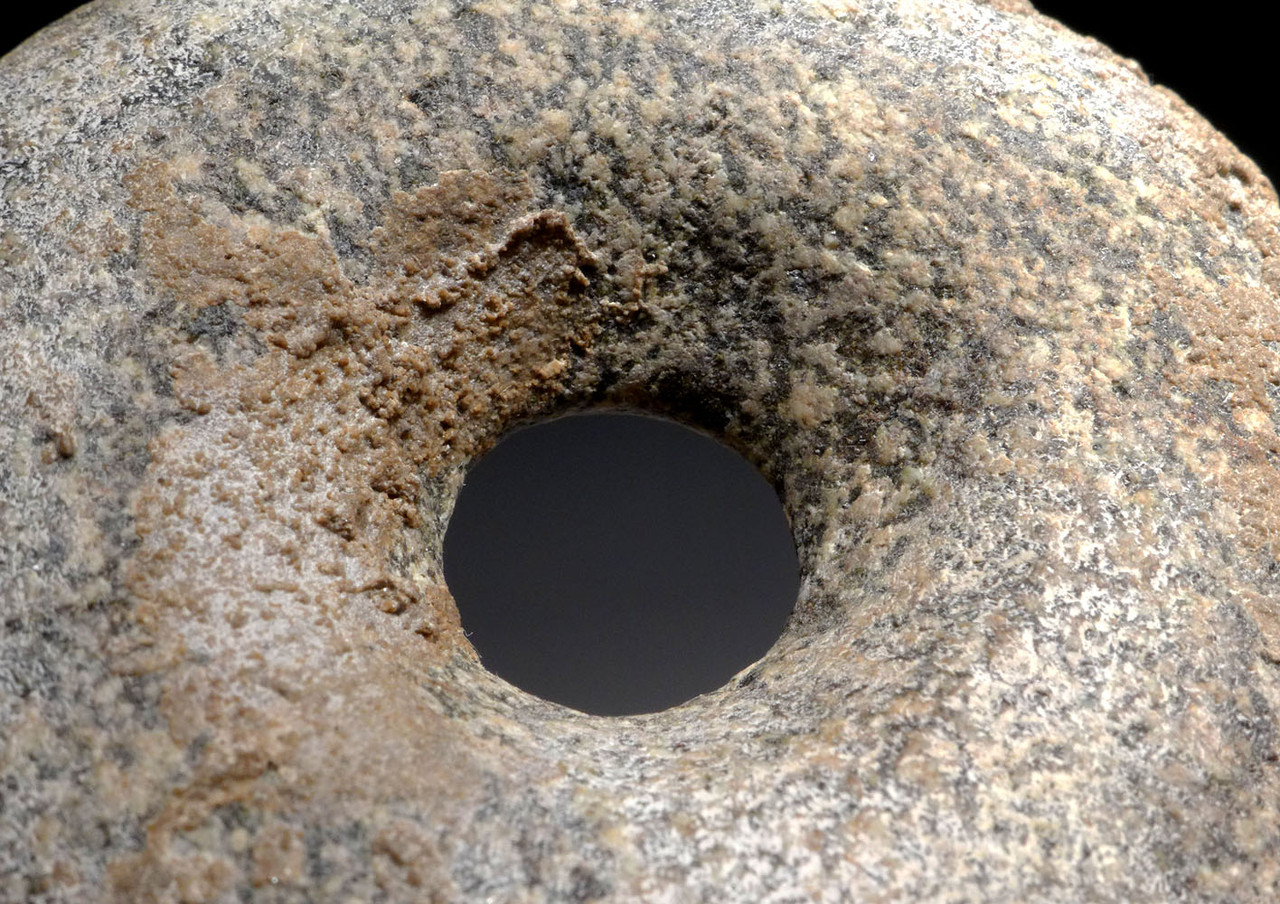Product Description
SEE MORE ANCIENT NEAR EASTERN LURISTAN ARTIFACTS
Ground out of schist and perforated in the center to mount onto a wooden handle, this stone disk mace comes from the region regarded as the "Cradle of Civilization", the Fertile Crescent. It dates back to the Chalcolithic Period, where metal (copper) was emerging as a replacement for stone in tools and weapons. Despite this new technology, stone was still the predominant material used. It is also the time when societies were developing, and warfare between groups and city-states, was increasing. Tools and weapons from this region and time are very scarce and this is one of the very few objects we will ever have to offer of its kind.
This unbroken and undamaged perforated disk mace head has a slightly upturned but rounded edge. It would have been employed by foot soldiers and later, by mounted warriors on horseback and chariot. Heavy calcite deposits on the surfaces testify to its extreme age. Stone disk maces like these were the first mace heads ever used, later to be replaced with copper and bronze as the later Bronze Age would usher in.
Maces were used in combat both on foot, and in chariots and horseback in Neolithic and Ancient cultures from the Near East. This weapon was most effective on unarmored or lightly armored foes. Upon the advent of bronze, bronze armor and helmets became commonly worn during combat and as a result, the stone mace became much less effective as the stone heads shattered upon impact with the metal armor.
HISTORY
The ancient Near East (including Mesopotamia and the Fertile Crescent) is considered the cradle of civilization. The Fertile Crescent is believed to be the very first region where settled farming emerged as people started the process of clearance and modification of natural vegetation to grow newly domesticated plants as crops. Early human civilizations such as Sumer in Mesopotamia, flourished as a result. It was here that intensive year-round agriculture was first practiced, leading to the rise of the first dense urban settlements and the development of many familiar institutions of civilization, such as social stratification, centralized government and empires, organized religion and organized warfare. It also saw the creation of the first writing system, the first alphabet (abjad), the first currency in history, the first law codes, early advances that laid the foundations of astronomy and mathematics, and the invention of the wheel. During the period, states became increasingly large, until the region became controlled by militaristic empires that had conquered a number of different cultures.
The mace was developed during the Upper Paleolithic from the simple club, by adding sharp spikes of either flint or obsidian. In Europe, an elaborately carved ceremonial flint mace head was one of the artifacts discovered in excavations of the Neolithic mound of Knowth in Ireland, and Bronze Age archaeology cites numerous finds of perforated mace heads. In ancient Ukraine, stone mace heads were first used nearly eight millennia ago. The others known were disc maces with oddly formed stones mounted perpendicularly to their handle.
The problem with early maces was that their stone heads shattered easily and it was difficult to fix the head to the wooden handle reliably. The Egyptians attempted to give them a disk shape in the Predynastic period (about 3850–3650 BC) in order to increase their impact and even provide some cutting capabilities, but this seems to have been a short-lived improvement. A rounded pear form of mace head known as a "piriform" replaced the disc mace in the Naqada II period of pre-dynastic Upper Egypt (3600–3250 BC) and was used throughout the Naqada III period (3250–3100 BC). Similar mace heads were also used in Mesopotamia around 2450–1900 BC.
 US DOLLAR
US DOLLAR
 EURO
EURO
 AUSTRALIAN DOLLAR
AUSTRALIAN DOLLAR
 CANADIAN DOLLAR
CANADIAN DOLLAR
 POUND STERLING
POUND STERLING


















